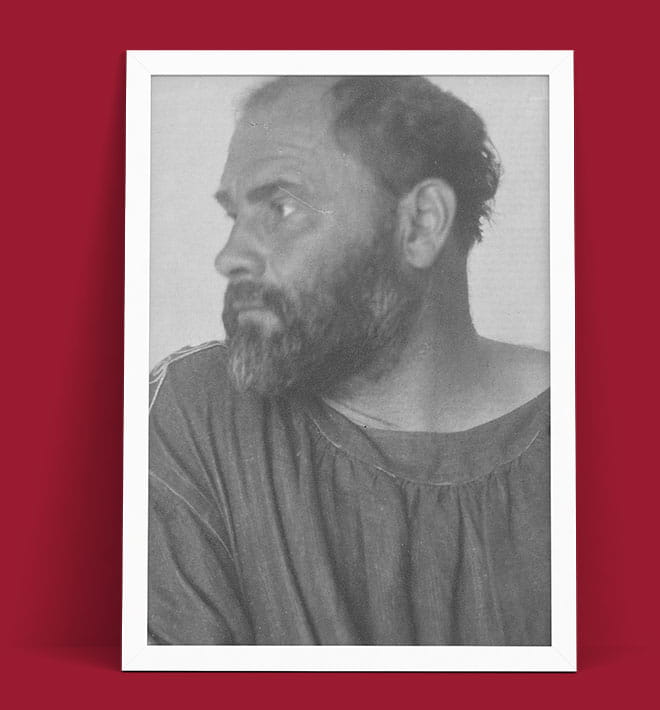Early Life and Artistic Foundations
Born in Baumgarten, near Vienna, Klimt was the second of seven children in a family of modest means. His father, Ernst Klimt, was a gold engraver, a profession that would later influence Gustav's use of gold leaf in his paintings. Displaying artistic talent early on, Klimt enrolled in the Vienna School of Arts and Crafts at the age of 14, where he received formal training in architectural painting. Initially, he collaborated with his brother Ernst and friend Franz Matsch, producing murals and ceilings for public buildings in Vienna.
The Vienna Secession and Stylistic Evolution
In 1897, Klimt co-founded the Vienna Secession, a group of artists who sought to break away from the conservative art institutions of the time. This movement aimed to provide a platform for unconventional artists and to introduce Viennese audiences to modern art trends from abroad. Klimt's work during this period began to exhibit a more personal and symbolic style, moving away from his earlier academic approach.
The Golden Phase and "The Kiss"
Klimt's "Golden Phase," spanning the first decade of the 20th century, marked the pinnacle of his artistic career. During this period, he extensively used gold leaf, inspired by Byzantine mosaics and his father's engraving background. The most iconic work from this era is The Kiss (1907–1908), a masterpiece that epitomizes Klimt's unique fusion of symbolism, eroticism, and decorative brilliance.
The Kiss portrays a couple entwined in a passionate embrace, their bodies adorned with elaborate patterns and shimmering gold. The painting's flat, two-dimensional appearance, combined with its intricate ornamentation, creates a dreamlike quality that transcends time and space. First exhibited in 1908 at the Kunstschau art exhibition, The Kiss was met with critical acclaim and quickly became a symbol of Viennese Jugendstil and European modern art.
Themes and Symbolism in Klimt's Artworks
Klimt's oeuvre is characterized by its exploration of themes such as love, sexuality, death, and regeneration. His portrayal of the female form is both sensual and symbolic, often embodying the complexities of human emotion and experience. Notable works like Judith I (1901) and Danaë (1907) exemplify his fascination with powerful female figures and mythological subjects.
Beyond his figurative paintings, Klimt also produced landscapes and allegorical works, showcasing his versatility and depth as an artist. His landscapes, often created during summer retreats, reveal a more introspective and serene aspect of his artistic vision.
Legacy and Influence
Gustav Klimt's innovative approach to art left an indelible mark on the trajectory of modernism. His synthesis of decorative elements with profound symbolism influenced contemporaries and future generations of artists. Klimt's works continue to captivate audiences worldwide, with The Kiss remaining one of the most celebrated paintings in art history.
Today, Klimt's masterpieces are housed in prestigious institutions, including the Belvedere Museum in Vienna, which boasts the largest collection of his works. His art not only reflects the cultural and intellectual ferment of fin-de-siècle Vienna but also resonates with universal themes that transcend time and place.


